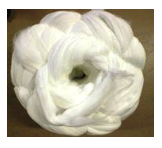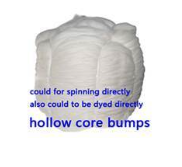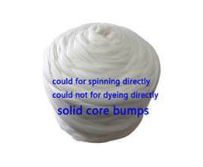Natural Fibers
More Info in Detail




Plant Based Fibers
Animal Based Fibers
Cotton
Linen (Flax)
Hemp
Jute
Coir (Coconut fibre)
Ramie
Bamboo
Wool (Sheep)
Silk (Silkworm)
Alpaca
Cashmere (Goat)
Mohair (Angora goat)
Rabbit Hair
1. Wool-Type Fibers (Hair of Mammals)
These fibers are keratin-based, crimped, and primarily used for warmth.
Sheep Wool – Merino, Shetland, Rambouillet, etc.
Alpaca – Huacaya (fluffy) and Suri (silky) varieties.
Llama – Coarser than alpaca but still soft.
Camel Hair – Especially from Bactrian camels, very warm.
Cashmere – From the undercoat of cashmere goats.
Yak Hair – Fine undercoat used for warm garments.
Vicuna – Very fine, rare, and luxurious fiber.
Guanaco – Similar to vicuña, softer than llama/alpaca.
Mohair – From Angora goat, silky and lustrous.
Qiviut – Musk ox undercoat, softer and warmer than cashmere.
2. Silk-Type Fibers (Secreted by Insects)
These are fibroin-based filaments produced by larvae or spiders.
Mulberry Silk – From Bombyx mori silkworms, most common commercial silk.
Tussar Silk – From wild silkworms, coarser, more textured.
Eri Silk – From Samia ricini silkworms, soft and matte.
Muga Silk – Golden-colored silk from Assam, India.
Spider Silk – Produced by spiders, extremely strong (used in research and specialty applications).
3. Hair / Specialty Animal Fibers
Used for brushes, accessories, and luxury blends.
Horsehair – From horse mane or tail, used for upholstery, bows, brushes.
Beaver Fur / Underfur – Formerly used in felt hats.
Rabbit Fur / Angora – Extremely soft, used for sweaters and accessories.
Reindeer Hair – Occasionally used in indigenous textiles.
Bison Fiber – Fine undercoat used in niche textile production.
1. Seed Hair Fibers
These fibers grow from the seed or fruit hair of plants. They are usually soft, fine, and highly absorbent.
Examples:
Cotton – from cotton seeds (Gossypium spp.)
Kapok – from kapok tree pods (Ceiba pentandra)
Applications:
Cotton: apparel (shirts, jeans, underwear), home textiles (towels, bed sheets), medical gauze
Kapok: pillow filling, life jackets (buoyant fiber), insulation material
2. Bast Fibers (Stem/Phloem Fibers)
These fibers come from the inner bark (phloem) of the plant stem. They are strong, coarse, and often used in ropes or technical textiles.
Examples:
Flax (Linen) – Linum usitatissimum
Jute – Corchorus capsularis, Corchorus olitorius
Hemp – Cannabis sativa
Kenaf – Hibiscus cannabinus
Ramie – Boehmeria nivea
Applications:
Apparel (linen shirts, summer suits – flax, ramie)
Industrial uses (jute sacks, ropes, geotextiles, tarpaulin – jute, hemp, kenaf)
Composite reinforcement (hemp in automotive panels)
3. Leaf Fibers
These fibers are extracted from the vascular bundles of leaves. They are stiff, coarse, and used where durability is needed.
Examples:
Sisal – Agave sisalana
Abaca (Manila Hemp) – Musa textilis
Applications:
Ropes, mats, brushes, geotextiles, paper (currency notes often use abaca)
4. Fruit/Coir Fibers
These are coarse fibers obtained from the outer shell (husk) of fruits.
Examples:
Coir – from coconut husk (Cocos nucifera)
Applications:
Door mats, brushes, mattresses, geo-mats for erosion control, insulation panels
5. Grass and Reed Fibers
Fibers from grasses and reeds are not spinnable into yarn but are widely used for weaving mats and baskets.
Examples:
Bamboo fiber (mechanically or chemically processed)
Raffia – from palm leaves
Straw – from wheat, rice, barley stalks
Applications:
Bamboo: clothing (when processed to rayon), flooring, curtains
Raffia & straw: hats, bags, decorative mats
6. Wood Pulp–Derived Fibers (Regenerated Cellulose)
Though processed chemically, these are plant-origin fibers derived from wood or bamboo pulp.
Examples:
Viscose Rayon, Modal, Lyocell (Tencel)
Applications:
Soft apparel (dresses, blouses), home textiles (bed linen), nonwovens, wipes
7. Protein-Blended Plant Fibers
Some innovative blends mix plant cellulose with protein or other natural binders to enhance properties.
Examples:
Soybean protein fiber blended with cotton or modal
Applications:
Luxury apparel, undergarments (soft handle, antibacterial properties)
8. Geotextile-Grade Plant Fibers
These are coarser grades of bast, leaf, or fruit fibers used in erosion control, landscaping, and road stabilization.
Examples:
Jute geotextiles
Coir geo-mats
Sisal nets
Applications:
Road underlay, soil erosion control blankets, slope stabilization, riverbank protection
9. Emerging/Specialty Plant Fibers
Novel or niche fibers under research or limited production.
Examples:
Banana pseudo-stem fiber – ropes, paper
Pineapple leaf fiber (PALF) – apparel, luxury textiles
Nettle fiber – sustainable fashion, ropes
Applications:
Eco-fashion fabrics, composite reinforcement (lightweight panels), high-end home décor






Natural Fibers in Tops Form
All tops are on 10kg bumps. This is for worsted system.
For cotton or short staple system, normally 5 gr/meter slivers are used. Please inquire via our email or our inquiry form.
Please advise whether they will be dyed or used as is.
More Info in Detail
Trawoe Professional Agency Corporation
Your trusted partner in outsourcing.
Contact us :
please subscribe :
© 2025. All rights reserved.